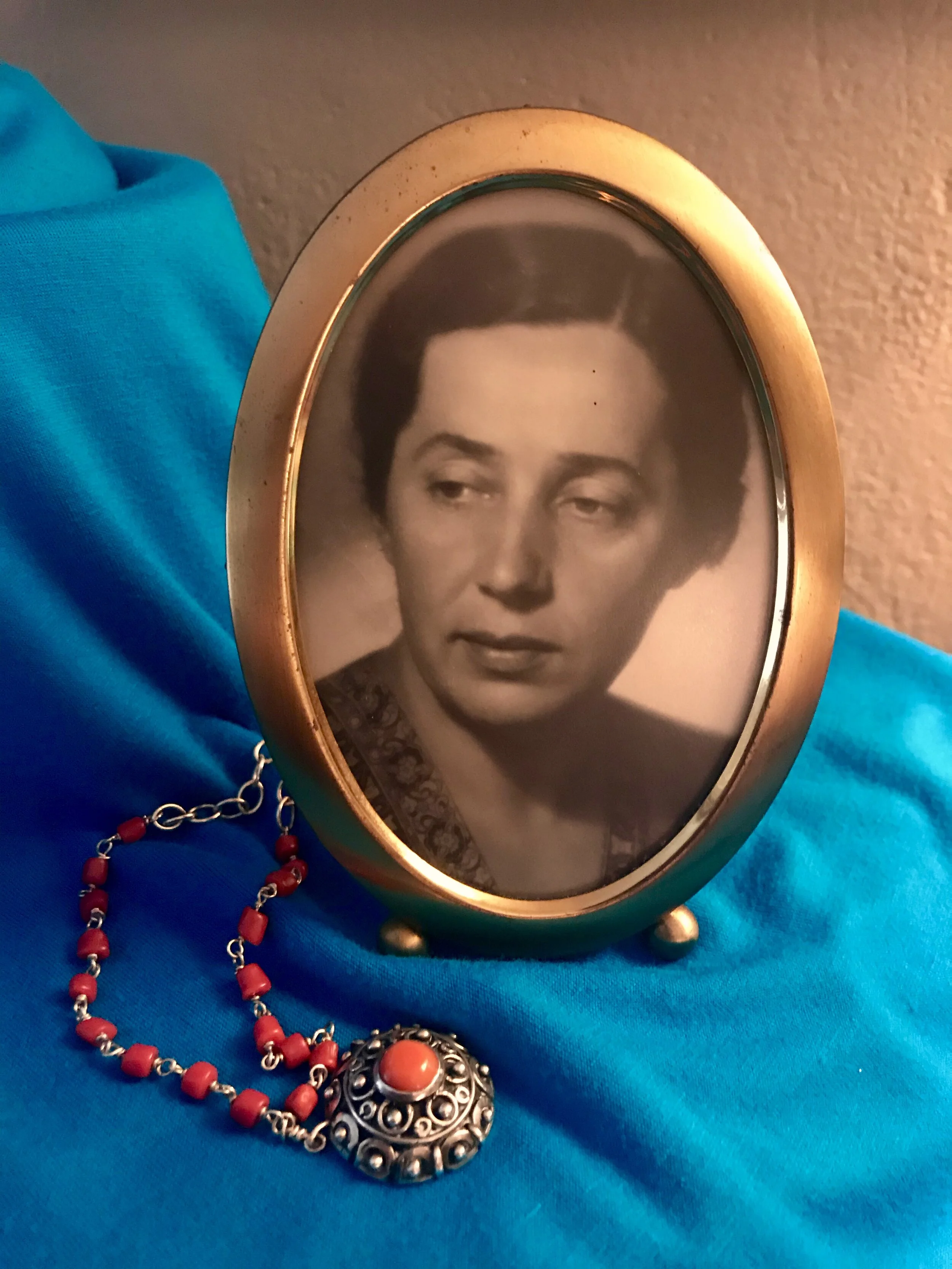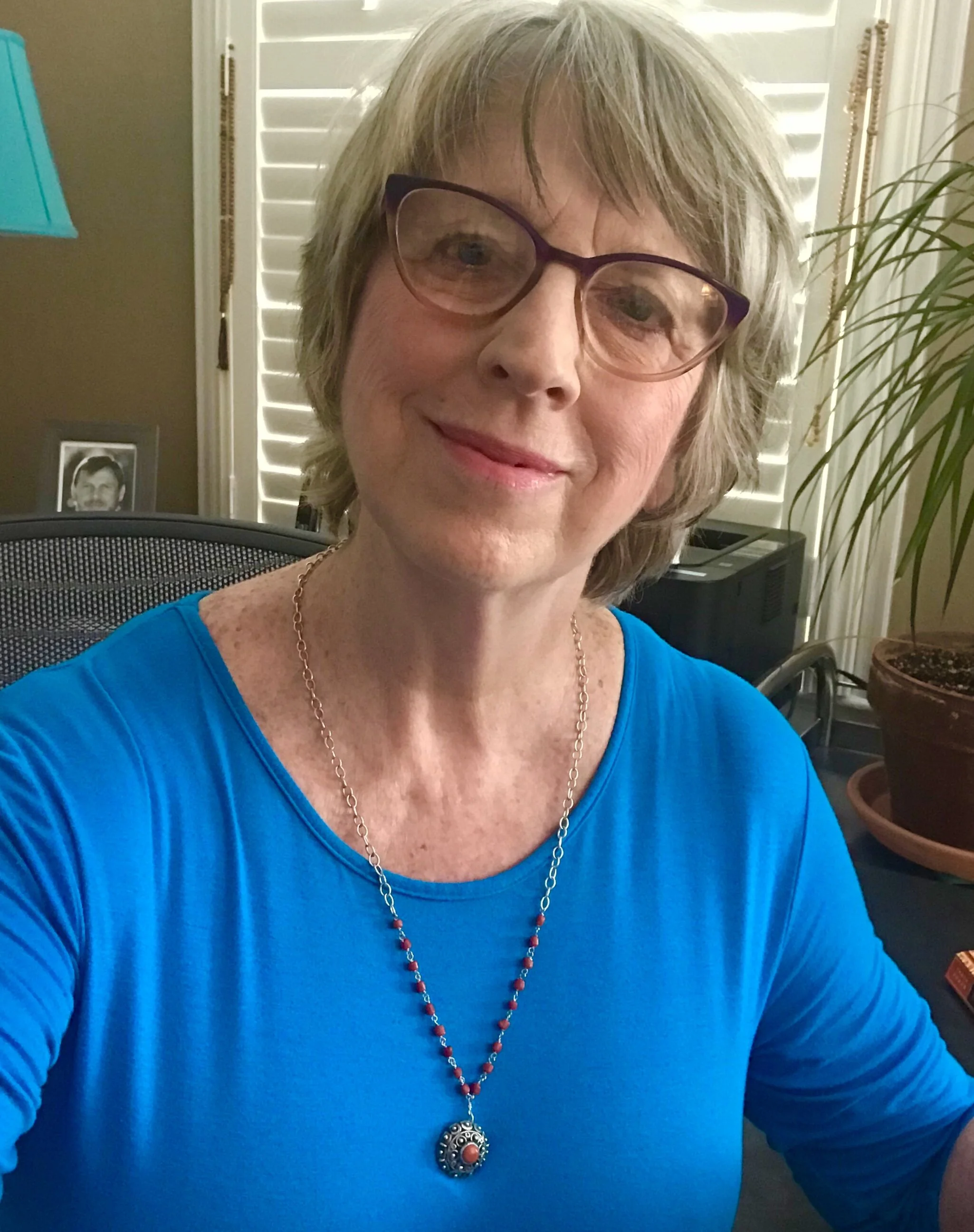We all own things that have stories behind them. The teddy bear my husband gave me for Valentine’s Day five years ago has a simple story. The silver brooch that passed from his mother’s hands to his, and from his to mine, tells a complicated one.
The brooch, now a necklace, and a portrait of my monster-in-law taken in the 1940s
It’s small—not even an inch in diameter—but it’s heavy, each piece of silver meticulously soldered onto a dome and fanning out from a carnelian mounted in the center. It looks like a miniature shield, a protective amulet. The woman who made it lived in the subdivided flat where my husband grew up in Poland. Her name was Joanna Szydlowska.
In the early 1940s, she ran afoul of the Nazis for her work with the Underground Resistance. She was sent to Ravensbruck, the camp where medical experiments were performed on seventy-two Polish Catholic women. Many died. Others were killed when their bodies became too broken to be useful. Szydlowska survived.
After the camp was liberated, she returned to her hometown. She’d always wanted to make jewelry, so after she got strong enough, she set out to learn how. My husband’s family says it took her a long, long time. But she didn’t let the Nazis win. She grew skillful and went on to create objects of beauty.
My mother-in-law wore the silver brooch for many years. Then in the mid-1970s, Tom, her youngest son (and my future husband) decided to leave Poland. It wasn’t easy because the Communists were still in charge. People who got out lost their professions if they couldn’t master a new language. But Tom’s marriage had ended, and he was determined to start over in the West. Everybody thought he would be back after a few months—everybody except his mother.
When they said good-bye, she gave him the brooch. She told him it was for his future wife.
Four years later, Tom and I are sitting on his couch, talking and cuddling. (It’s 1980 and we’re in West Africa, so we don’t have a laptop or a TV to disappear into.) He suddenly jumps up and goes into his study. When he comes back, he sits down and says, “This is for you,” placing the brooch in my hand.
I look at it. I look at him. Last year he told me all about the pin—what his mother said, who made it. How can I say what I’m thinking? Coming into town from my village to be together on the weekend is one thing; marriage is another.
I must look panicked. He rushes to reassure me that there are no strings attached—the brooch is for what we’ve had, not for what we might have. Relieved, I let out the breath I didn’t realize I was holding. The pin shimmers in my palm. I think of the woman who made it, of the hardship she endured and of her persistence in overcoming it. I think of Tom’s mother in Poland, of the gracious way she let her youngest go. I feel so honored, I want to weep.
I’d love to hear about the objects you cherish for the stories they tell. Which one is the most meaningful to you?
Me, wearing the brooch as a necklace

